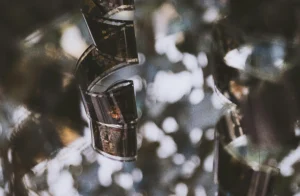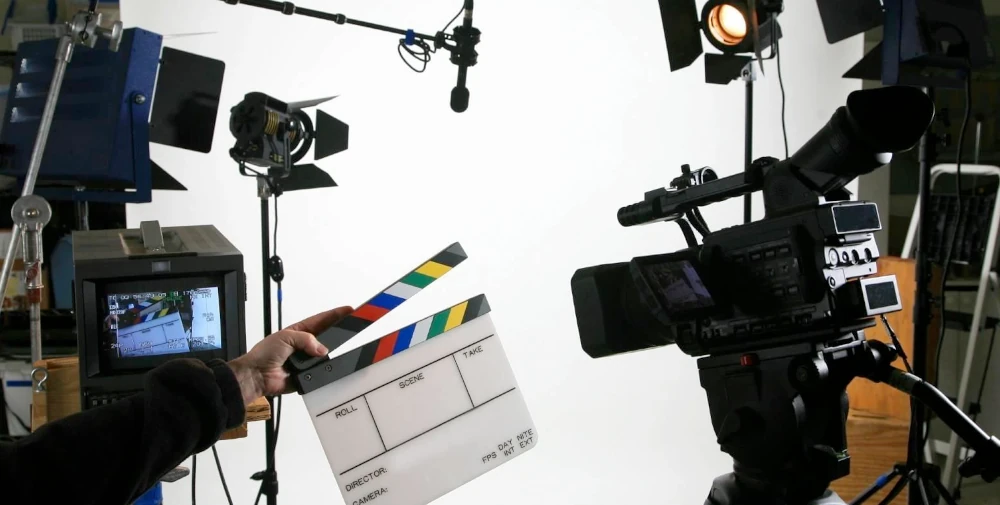
What Is Composition in Filmmaking? Key Elements Explained
A Visual Storytelling Guide: What Is Composition in Filmmaking?
Think back to a movie moment you can’t forget—maybe it’s the lighting casting dramatic shadows, the actor’s stunned expression, or a masterfully composed shot that made you feel like you were in the scene. That’s composition in filmmaking at work—the artful arrangement of elements inside the frame that directs your eye, shapes mood, and tells story without a word.
In this guide on “what is composition in filmmaking” and the “elements of composition in film,” you’ll discover how to harness framing, balance, and visual flow to transform ordinary footage into cinematic storytelling.
What you’re actually seeing is composition—one of the strongest weapons in a filmmaker’s toolkit.
Composition isn’t simply about aiming the camera and clicking record. It’s about where you aim it, how you compose it, and why it’s laid out like that. This is a lot like a film treatment, where filmmakers outline the visual style and narrative structure before shooting begins. You might be a film student, an independent filmmaker, or just a movie aficionado, but knowing about composition has the power to make your eyes see the world in a new way as far as visual storytelling is concerned.
Let’s go deep on what composition in filmmaking actually is—and why you’re more likely to care than you realize.
What is Composition in Filmmaking?
Composition in filmmaking refers to the arrangement of visual elements within a frame to convey meaning, mood, and focus. It guides the viewer’s eye and supports storytelling. In movies, composition helps establish relationships, emotions, and themes through visual structure. Key elements of composition include framing, rule of thirds, leading lines, depth, balance, and color. Effective composition enhances the narrative and emotional impact of a scene.
Elements of Composition
In order to fully appreciate the strength of composition, it is helpful to deconstruct it into its fundamental elements. These are the visual elements that directors, cinematographers, and editors use to create stunning and significant scenes.
1. Framing in Composition
Framing is what you include—or exclude—within the shot. It’s a deliberate decision that informs the viewer as to what matters. For example, a close-up might emphasize emotion, whereas a wide shot can create location or mood.
Framing may be symmetrical (think Wes Anderson quirky precision) or asymmetrical for tension.
2. Rule of Thirds
This is one of the first lessons in visual storytelling. Think about breaking the frame up into a grid of nine equal squares (imagine a tic-tac-toe board). Putting your subject on the lines where they intersect creates visual balance and leads the eye naturally.
It’s an easy-to-use tool—but unexpectedly powerful.
3. Leading Lines
Leading lines are visual triggers—such as fences, roads, and doorways—that direct the eye to a focal point.These can establish depth, create a focus, or even psychological tension.
For instance, when the camera follows a character down railroad tracks, your eye trails behind, and the experience feels more immersive.
4. Depth and Layers
Flat pictures are uninteresting and two-dimensional. As, you set up a shot with foreground, middle ground, and background objects, the image comes alive.
This overlap is what creates scenes that feel rich and substantial. Consider a shot in which a character is sharp and individuals blur by in the distance—that’s depth doing its thing.
5. Symmetry and Balance
Ideal symmetry can communicate order, serenity, or spookily perfect (once again, thank you, Wes Anderson). Conversely, off-balance in a shot can create tension and apprehension or call attention to something out of the ordinary.
Decision is strictly up to what kind of emotional response the director desires.
Why Composition Is Important?
You may ask: with all that is happening in a film—dialogue, music, performances—does composition amount to much?
The answer is an emphatic yes.
Composition subtly shapes how the audience feels about what they’re seeing, similar to production design in filmmaking, which also plays a significant role in creating the visual atmosphere of a scene. A low-angle shot might make a character look powerful or intimidating. A handheld, off-balance shot might make the viewer feel anxiety or chaos.
You don’t always notice these things consciously—but your brain feels them. That’s the real power of composition. It’s the visual language of film.
Here’s what good composition can do:
Improve storytelling through highlighting mood, relationships, or themes.
Draw the audience’s eye to where it will have the greatest impact.
Create a visual rhythm that holds spectators.
Convey subtext without using words.
As a whole, it’s what differentiates a visually mediocre movie from one that lingers.
Composition Techniques in Filmmaking
Let’s take a look at some of the most common composition techniques that you’ll notice once you know what to see:
- Center Framing
When a subject is a dead center in the frame, it can be powerful, intentional, or creepy. Directing assistants use it to indicate importance or control.
Example: The Grand Budapest Hotel frequently employs center framing for comedic timing and symmetry.
- Negative Space
This is the negative space surrounding a subject.
Example: Sofia Coppola employs negative space in Lost in Translation to emphasize loneliness in a foreign country.
- Dutch Angle (Tilted Shot)
Tilt the camera to create unease or instability—ideal for scenes of confusion or peril.
Example: The Dark Knight utilized Dutch angles to mirror the Joker’s randomness.
- Over-the-Shoulder Shots
Used in dialogue scenes, this shot composition provides context to dialogue and sets up point-of-view dynamics among characters.
Deep Focus
The entire shot—from the foreground to the background—is in sharp focus. This enables multiple elements of the story to happen in one shot.
Example: Citizen Kane is famous for its deep focus.
How Filmmakers Employ Composition Emotionally?
Suppose you have a shot of the character sobbing in a room. You might film it a number of ways:
- Close-up, center frame: Is all about emotion.
- Wide shot with lots of open space: Is about isolation.
- Back of the head, gazing out a window: Is about thinking or doubt.
- Bird’s-eye view: Makes the character seem small and powerless.
Every version has a different emotional narrative—without altering the script whatsoever.
This is the magic of composition: it adds meaning to the look of the film.

5 Commonly Asked Questions (FAQs)
1. Can I defy composition rules?
Of course. Rules such as the rule of thirds are guidelines, not laws. Some of the most famous shots in the history of cinema defy the rules. Just learn them first so you can intentionally break them.
2. Do I need a pricey rig to create good shots?
Nope. Composition is vision, not equipment. Whether you’re shooting with a DSLR, smartphone, or a RED cinema camera, composition is a function of your eye—not your bank account.
3. What is the distinction between composition and cinematography?
Cinematography is the overall art of how a movie is filmed—it involves lighting, camera movement, lens selection, and so forth. Composition is a subset of cinematography that specifically addresses visual placement within the frame.
4. How do I improve my composition?
Watch movies. Stop and examine frames. Work with your own shots—photography is an excellent means to develop compositional expertise. And don’t hesitate to try new things.
5. Is composition influential upon pacing in film?
Yes! Fast cuts and close-ups look fast and urgent, and wide, slow shots make things slow down. Composition subtly controls rhythm and pacing.
Conclusion
Composition is not about getting things to “look cool” or “aesthetic” for its own sake. It’s about storytelling visually with purpose.The next time you watch a movie, pay attention to how scenes are framed. Notice the angles, the lighting, and the background elements. Chances are, what made you feel something wasn’t just the acting or music—it was the composition working behind the scenes.

